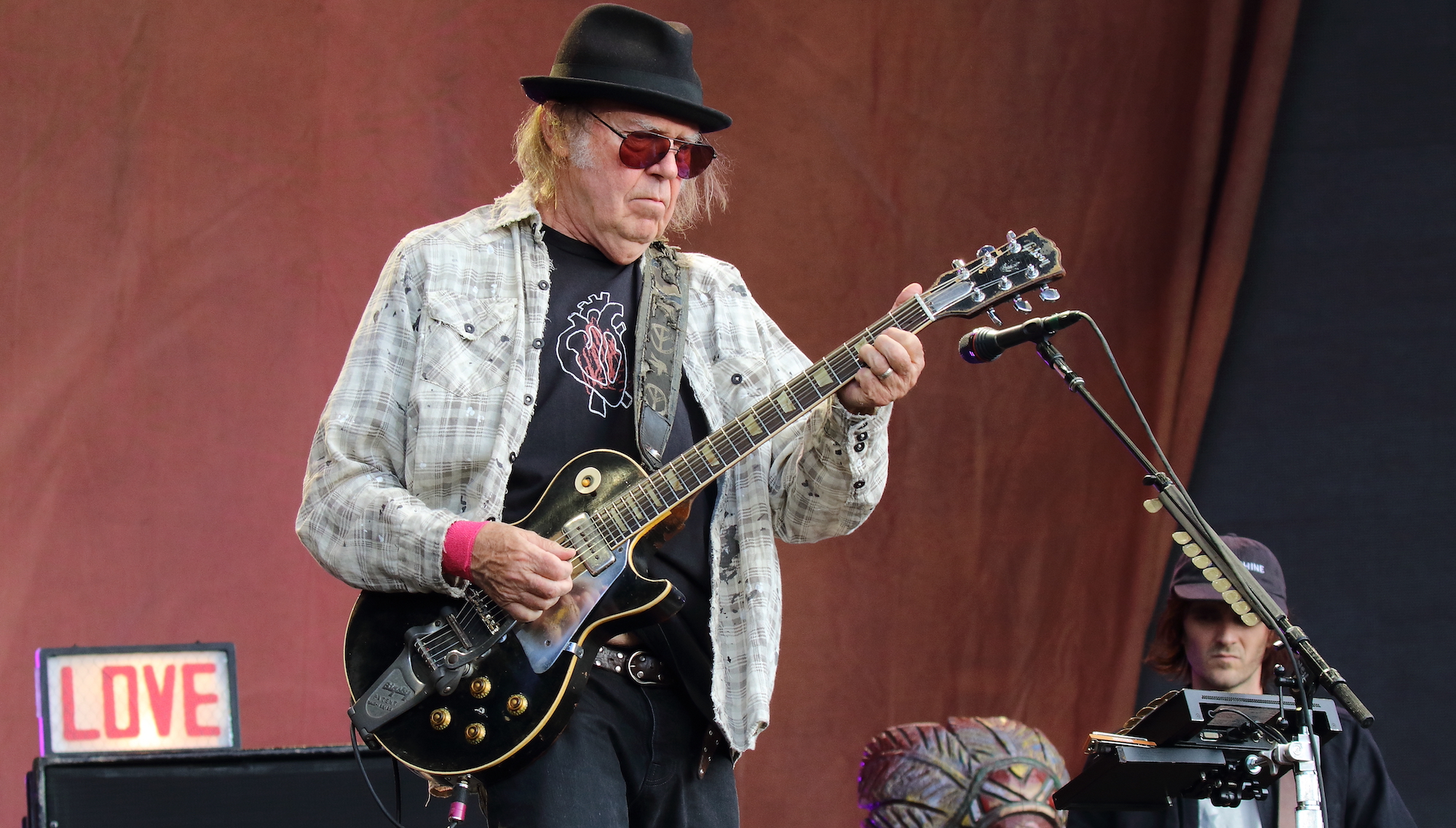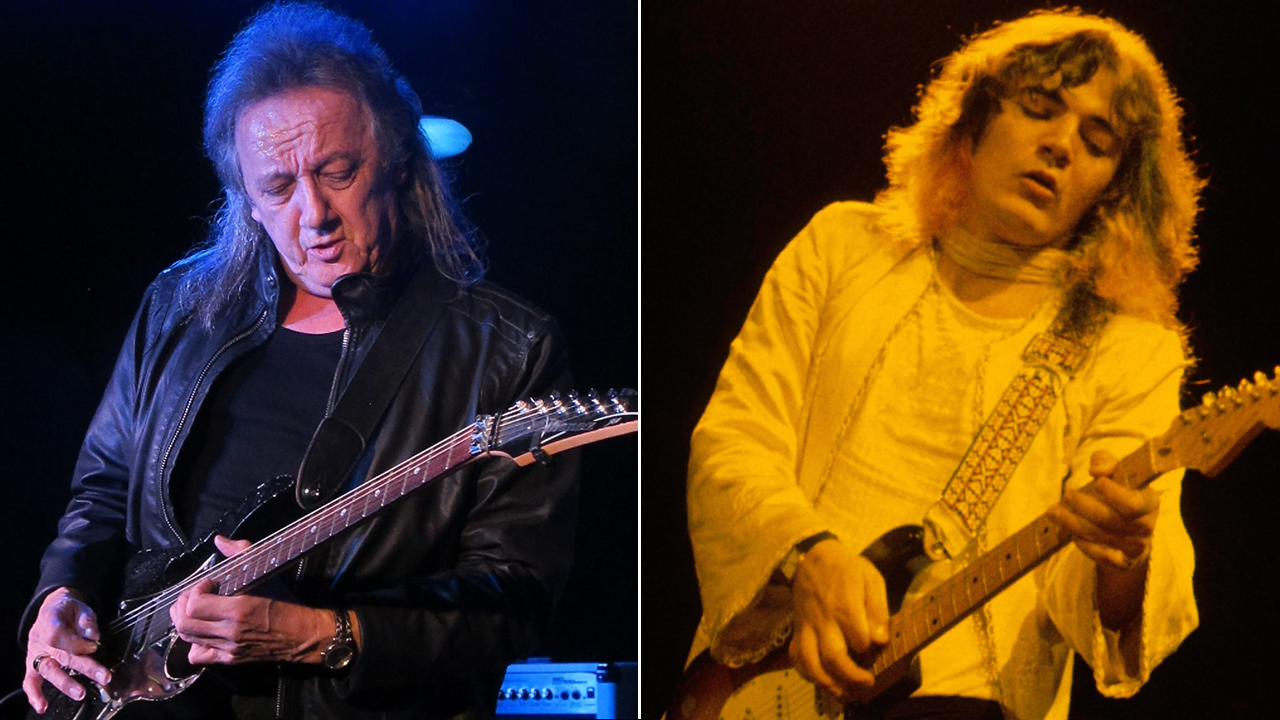Neil Young showcases his savage overdriven tones and channels Hendrix in the most menacing solo rendition of the Star-Spangled Banner you’ve ever heard
Wielding his legendary 1953 Gibson Les Paul, Old Black, Young put his own spin on the US national anthem, nodding to a certain Woodstock performance along the way

On Thanksgiving Day (November 23), electric guitar hero Neil Young posted a video titled Stand for Peace, which features him playing The Star-Spangled Banner solo.
Wielding his iconic, much-modded and road-worn 1953 Gibson Les Paul – known as Old Black – Young delivers a very Young-ian rendition of the US national anthem that will also bring to mind Jimi Hendrix's gloriously freewheeling Woodstock rendition of the same tune.
By Young-ian, we mean that the tone of this interpretation is absolutely brutal – getting progressively more so as it goes on. By the time Young reaches the song's conclusion, the drive and nastiness is such that you'd think that the circuitry of his guitar amps is actively cooking.
As Young's longtime tech, Larry Cragg, told Guitar World in a 2009 interview, that scenario is not at all farfetched.
The core of Young's guitar amp setup is a 1959 tweed Fender Deluxe. Originally a 15-watt unit, it was hot-rodded with two 6L6s in place of its original tubes. That boosts the output from 15 to 19 watts, and makes the Deluxe run so hot that Cragg typically has high-powered fans running behind the amp at all times to “keep it from blowing up.”
Though it's decidedly lacking in close-ups of Young himself, the video does feature a tasty shot of the guitarist's pedalboard, which is almost as famous as Old Black.
Over-sized, made of red wood, and just as worn-through as much of Young's other gear, the pedalboard has – among other unique features – something called an “ugly button.”
All the latest guitar news, interviews, lessons, reviews, deals and more, direct to your inbox!
“That’s a very strange thing, and Neil only hits it when he wants to go to the next level,” Cragg told Guitar World in 2009. “It activates a unit that’s just totally freaked out. It’s adjusted how it definitely should not be adjusted. But Neil seems to like that.”
Old Black, too, is a unique beast that – aside from a number of other tweaks – features a Firebird pickup at the bridge.
“Originally there was a P-90 in there,” Cragg said in 2009. “But in the early Seventies the guitar was lost, and when Neil recovered it a few years later the bridge pickup was gone. He put a Gretsch DeArmond in there for a while, but when I came onboard I replaced that with the Firebird, which has been there ever since.
“Everyone calls it a mini humbucker, but it’s not. It’s a humbucker, and it’s very microphonic – you can speak into it. It’s really piercing and high and a big part of his sound.”
Jackson is an Associate Editor at GuitarWorld.com. He’s been writing and editing stories about new gear, technique and guitar-driven music both old and new since 2014, and has also written extensively on the same topics for Guitar Player. Elsewhere, his album reviews and essays have appeared in Louder and Unrecorded. Though open to music of all kinds, his greatest love has always been indie, and everything that falls under its massive umbrella. To that end, you can find him on Twitter crowing about whatever great new guitar band you need to drop everything to hear right now.


